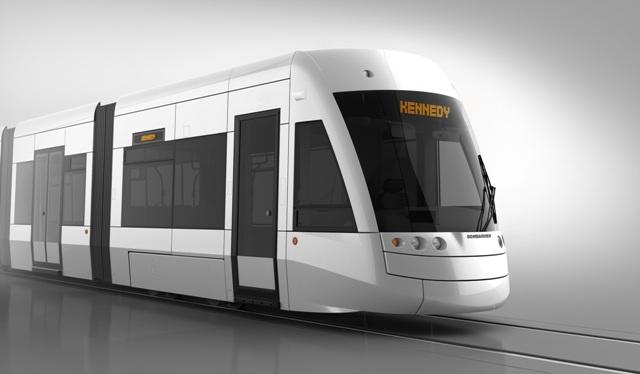 |
| The Eglinton-Crosstown LRT (Source: Metrolinx) |
This article is shared with Urban Toronto.
This morning, Metrolinx announced its decision to proceed with an alternative financing and procurement model for the new Eglinton Crosstown LRT. In other words, private consortia will compete for the right to build and operate the new line instead of the TTC. If the contract is well designed, this approach can transfer the risk of delays and cost overruns from the government to the private partner. The Canada Line in Vancouver is a good domestic example of this type of procurement, and its private consortium completed the project more-or-less on budget and in time for the 2010 Olympics.
The TTC’s response quoted in the Star verged on the bizarre, trying to cause anxiety that riders would be forced to pay separate fares to ride the new Eglinton line. This certainly need not be the case, as the Canada Line is fully integrated into the existing transit system with seamless connections. The TTC tried to claim that Eglinton Crosstown and the Canada Line are “a completely different scenario because the Canada Line is restricted to a single route with far fewer connections than the Eglinton line will have, and no zones.” It is difficult to understand what they meant by far fewer connections, since the Canada Line connects with the existing Skytrain and numerous bus routes. The presence of zone fares in Vancouver is also an irrelevant distraction. The TTC understandably isn’t enthusiastic about losing control of a major piece of transit infrastructure in the middle of its service area, but a well-designed AFP could prove to be a cost-effective option.
Eglinton Crosstown and the Canada Line are hardly “completely different” and there is absolutely no reason why Eglinton can’t and won’t be completely integrated into the TTC’s fare system. The main difference between the two lines is that the Canada Line cost $2 billion for 19.2 km of fully grade-separated rapid transit, while the Eglinton line is projected to cost three times as much (~$6 billion at last count) for 25 km (including rehabilitation of the existing Scarborough RT corridor) with far less capacity and a reliability-killing on-street section in the middle.
 |
| The Canada Line Bridge over the Fraser River (Source: Canada Line) |
With cost estimates already so high, there is little incentive for the private consortia to keep costs low. If the private bidders were to be able to reduce costs to even twice that of the Canada Line per kilometre, it would likely be possible to fully grade-separate the Eglinton Crosstown (perhaps with an elevated segment through western Scarborough) without increasing its current budget.